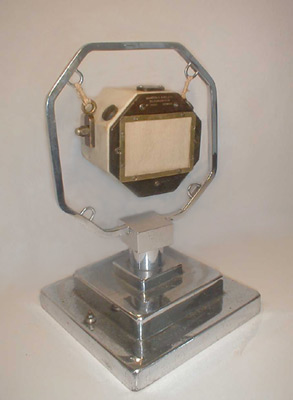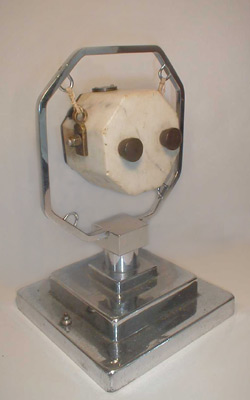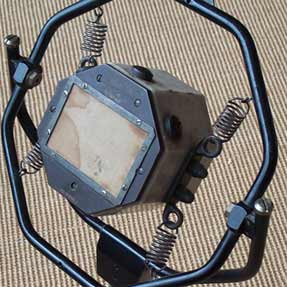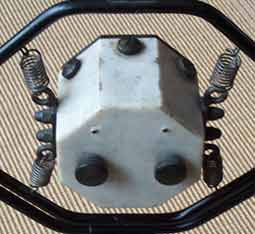

The Marconi-Reisz mic was developed c.1925/6. It originated in Germany but was manufactured in the UK. It consisted of an octagonal block of marble hollowed out on one side to form a cavity into which carbon granules were placed and held in place with a diaphragm initially made of rubber and later of mica. The mica diaphragms had an unpleasant peak at around 5kHz and eventually rice paper was used. All carbon mics need a polarising voltage and this was provided by an 8-volt supply in BH in 1932.
The Marconi-Reisz was a vast improvement on the Peel-Conner mics and although it could be easily overloaded and tended to produce an increase in hiss if the carbon granules packed together, the later versions had a response that was within 2dB from 100Hz to 8kHz. It continued in use until the introduction of the Type A ribbon mic in 1935.
Below are pictures from Frank Brockman of a probably slightly later mic, with double ended slinging lugs. The suspension springs and frame are all original.



